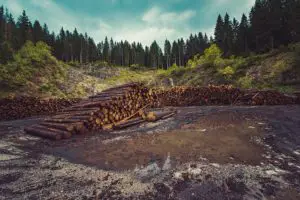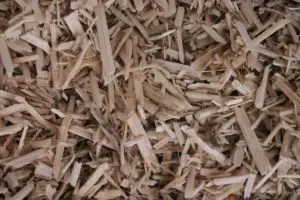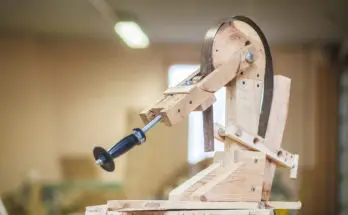Woodworking is a wonderful hobby with a long history. Few crafts allow someone to feel their work form before them as they chip and cut away lumps of wood into works of art and furniture. Similar to 3D printing, some have started questioning if the amount of wasted material in woodworking harmful for the environment. That and other concerns have arisen in recent years regarding just how green woodworking truly is.
Woodworking on its own is not bad for the environment. Wood is a renewable resource. Though it takes time, with proper conversationalist care and respect for the material they are using, woodworkers can continue to enjoy their craft and look after their corner of the environment.
Environmental Changes
Many environmentalists and conservationists point to the devastation in the Amazon as a sign of the dangers of the lumber industry. However, such efforts were not committed by the lumber industry, but farmers and cattle ranchers. Forest clear cutting for lumber is no longer practiced because of its inefficiency and the dangers it presents to the environment.
A clear cut forest cannot re-grow, and a forest that cannot replenish itself is a forest that cannot produce lumber. As mentioned before, wood is a renewable resource and one of the greenest industries in the business. It was not in the case in the past,  certainly, but woodcutters and woodworkers in the modern era are well aware of how important it is to maintain sustainable woodcutting and lumber production.
certainly, but woodcutters and woodworkers in the modern era are well aware of how important it is to maintain sustainable woodcutting and lumber production.
Closer to home, environmentally friendly woodworking has its challenges, just like any other green endeavor. One of the issues of woodworking is the chemicals involved in dyes and finishes. Many of those chemicals need to be carefully stored, used, and disposed of throughout the woodworking process. Water based dyes and finishes are available, but can be tricky to work with. The quality of water bases can be sub-par compared to traditional lacquers as well.
The switch from traditional chemicals to water bases can be an expensive and daunting one, but the option is there. In the wake of concerns over exposure to chemicals in various industries, more non toxic options are entering the market as environmental awareness becomes more commonplace. Whether water based or not, lacquers, stains, and paints free of toxins and harmful chemicals are available for those in the craft seeking to reduce their impact on the environment.
The big concern for woodworkers, of course is the wood itself. Exotic woods are highly desired for many projects. Those woods are sustainably produced in modern times, but those farms use resources just like any other agricultural cash crop.
Green advocates tout the use of recycled and locally grown products, but sometimes they just aren’t available. Reclaiming wood, is, however, a popular part of the craft for many woodworkers.
Reclaimed Wood
Reclaimed wood has grown in popularity among designers and woodworkers alike, but it has its own concerns as well. Though recycling is good for the environment, it is worth noting that the wood being reused may have been chemically treated in the past. There’s nothing you can do about it, but it is something to consider.
Reclaimed wood can also be more expensive than new wood due to salvage costs or rarity. Still, reclaimed wood is wood not cut down –it was once, but you can’t really do it again- and that in itself is good for the environment. Whether for designing or going green, reclaimed wood is one of the easiest ways for woodworkers to maintain their craft and support the environment.
An additional environmental bonus is the use of reclaimed exotic wood. Whether farm raised or not, the use of exotic wood in wood crafting is becoming a hot topic in the environmental and conservation community.
Reclaimed wood is naturally fair game since it was already cut down. Reclaimed wood is also usually stronger than newer lumber. While new lumber either comes from new growth forests or young farm trees, reclaimed wood is from older trees and thus denser, making for a sturdier and more solid piece.
Long Term Impact
The environmental friendliness of wood is especially apparent when compared to popular plastic counterparts. Many companies have started touting plastic decks to replace wood. Whatever the potential benefits of a plastic deck, the decking is not recyclable. The lumber from a wood deck, however, is.
The energy used in the creation of plastic products is often more than that used to fashion lumber as well. Though plastic is a wonderful product for a variety of needs, when it comes to woodworking, wood is unsurprisingly the best material for the task. For wood that isn’t reclaimed but is recycled for some other use, the question arises as whether or not the wood can be recycled.
While woodworkers and lumber yards reuse sawdust to sell or for yard work and turn wood scraps into simple projects or sell as repair wood to farmers, not all wood can be recycled. Pressure treated wood in particular is not recyclable, and the description from The Home Depot helps explain why:
Pressure Treated Woods
Pressure-treated wood has gone through a process that uses high pressure to force a solution of water and preservative agents deep into the lumber to help extend its useful lifespan.
The active ingredients commonly used in treated wood are alkaline copper quaternary (ACQ), copper azole (CA) or micronized copper azole (MCA). These compounds react with the wood fibers to slow natural decay and have properties to resist termites, fungus, moisture and other elements that promote rot and cause structural degradation.
This preservation process enables pressure-treated fence posts, for example, to withstand years of being embedded in soil.
Because pressure-treated wood absorbs a significant amount of liquid during the manufacturing process, it typically arrives to stores still wet and can take up to several weeks to completely dry out. The preservatives remain in the lumber after the water evaporates.
Not a lot good for the environment going on in that description. Though reclaimed and recycled wood can be and often is treated to an extent, the process of pressure treating is just too chemically invasive.
There is plenty of wood that can be recycled and reclaimed, however, and that is why woodworking and the lumber industry work so hard to keep their craft green and remain aware of public sensitivity. Though there are concerns, those concerns are exaggerated and easily countered with sustainable and toxin-free practices.
Woodworking is not bad for the environment. While the chemicals and processes involved may seem harmful and wasteful, they are in fact only a small part of the process and not sufficient to create a problem. Woodworkers don’t use chemicals in large quantities, and those chemicals they do use are safely disposed of and stored.
Recycling
The wood waste from any woodworking product can be reused as sawdust or scrap wood. This is also true of the lumber industry in general. Saws and lumbering equipment are much, much more efficient than the bulky oversized saw blades of the industry’s early years.
The lumber is efficiently cut and sorted, and the waste sold as sawdust and scrap to farmers and hardware stores. Lumbering is well aware of how green its industry truly is, and is proud of its part in recycling and supporting the environment.
Concerns over environmental friendliness in woodworking are valid. Trees are  important for fighting climate change and the encroachment of marshlands where once stood forests. Woodworkers are very aware of these concerns, and those in the craft are also aware how environmentally friendly their work already is.
important for fighting climate change and the encroachment of marshlands where once stood forests. Woodworkers are very aware of these concerns, and those in the craft are also aware how environmentally friendly their work already is.
Thanks to heavy use of recycling, reusing, and reclaiming, woodworkers can continue their efforts confident in the continued presence of the tress they love to have around, and love to work with.
Woodworkers love trees, both as part of the environment and for the wonderful things they can do with that wood. They know better than anyone what happens without them, and are just as determined as anyone else to ensure we’ll have forests for everyone to enjoy into the future.




